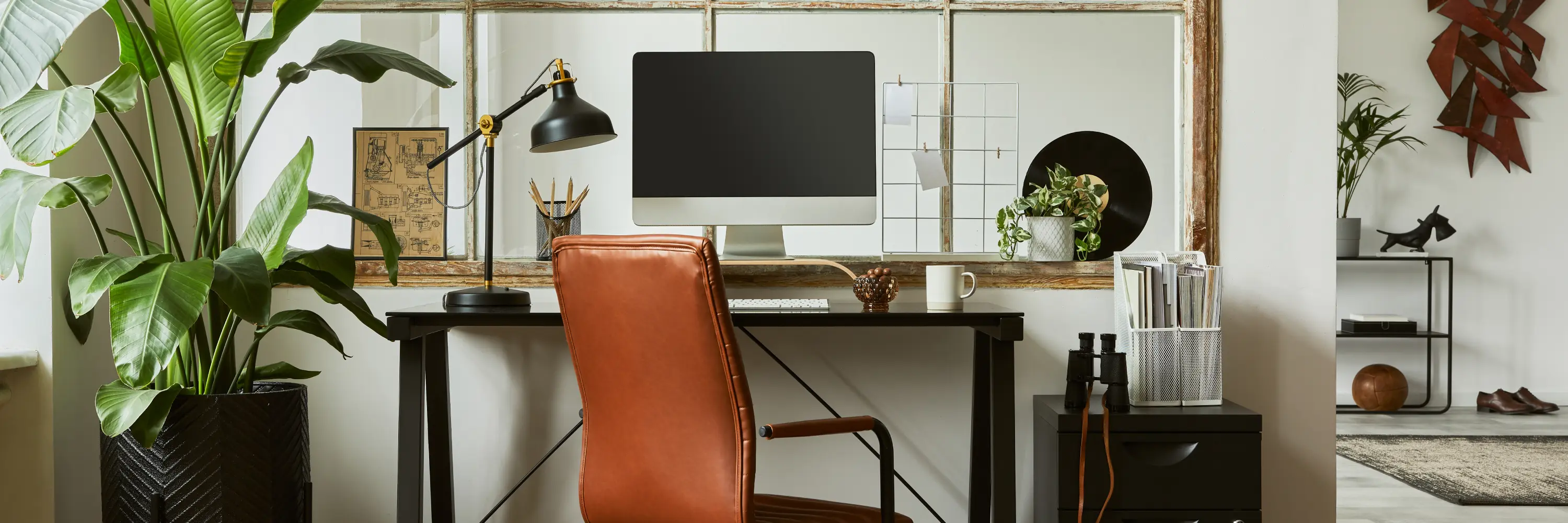
Working from home can offer a lot of freedom—but it also presents a unique set of challenges for staying active and maintaining healthy movement patterns. If you're sitting for hours on end in a makeshift setup, that stiffness in your hips or tightness in your shoulders may not be just in your head.
This guide explores ways to create a home office environment that supports movement, encourages regular resets, and promotes long-term physical durability—without overhauling your entire space or breaking your workflow.
Unlike traditional office environments that may include walking to meetings, standing desks, or access to wellness resources, home offices often encourage long bouts of uninterrupted sitting. This can limit daily movement variability and contribute to:
Designing a workspace with movement in mind doesn’t mean you need to be on your feet all day. It simply means building in more variety—more opportunities to shift, stretch, stand, and reset throughout your day.
Note: Small changes in setup and habit can help reduce that “locked in” feeling many experience after hours of sitting.
Having a home office that can adapt to different working positions can make a big difference over time.
You might explore:
Tip: Even standing for just 5–10 minutes every hour may help support circulation and reduce stiffness.
Keeping basic tools nearby can prompt more movement throughout the day.
Consider storing:
Having these items in sight increases the likelihood you'll take a few minutes for a posture reset or mobility check-in.
Mixing in some floor work during calls or reading time can vary your positions and challenge your hips and core in new ways.
Try sitting in:
Rotating through these throughout the day can offer a gentle way to maintain joint range of motion without a structured workout.
Related post: 7 Most Underrated Exercises to Do Daily for Better Mobility and Strength
You don’t need a full workout between meetings to support joint health and circulation. Here are some micro-movements and resets commonly included in movement-friendly workspaces:
Sit tall, then slowly reach one arm overhead and side-bend gently to the opposite side. Repeat on both sides.
Try: 2–3 rounds per side
Stand and slowly lift your heels off the floor, then lower with control.
Try: 10–15 reps every 30–60 minutes
Stand with your back against the wall, elbows bent at 90°, and gently slide your arms up and down without shrugging.
Try: 1–2 sets of 6–8 reps
These small resets take less than a minute but may help reduce the feeling of tightness or “slump” by mid-afternoon.
Designing a movement-friendly workspace also means building habits into your routine.
A short, low-effort movement sequence at the start of your day may help “clear the cobwebs” before long work sessions.
Related post: Signs Your Workday Might Be Lacking Movement—and What to Try
Use timers or calendar reminders to stand, stretch, or move. Apps and smartwatches can provide helpful nudges if you tend to lose track of time.
Common cadence: Every 45–60 minutes
Use transitions between tasks or meetings as mini movement breaks. Stand up to refill water, do a quick breathing drill, or change your sitting position.
Tip: These transitions help reset not just your body—but your focus too.
When your home office overlaps with your living space, it’s easy to blur lines between “on” and “off” time. Clear workspace boundaries can encourage movement in two important ways:
Consider using lighting, music, or a simple physical cue (like changing clothes or moving to a different chair) to signal the end of your work session.
If space allows, designate a small area near your desk for quick resets. This could include:
This reset zone becomes your go-to spot for 5-minute breaks—no planning or motivation required.
Related post: Movement Routine for Remote and Hybrid Workers: Stay Active While Working From Home
A movement-friendly home office doesn’t have to be fancy. With a few intentional tweaks—like adjusting your setup, integrating micro-movements, and setting clear routines—you can support your physical durability while still getting your work done.
The key is variety: Different positions, different tools, and different rhythms throughout the day. Your workspace should work with your body, not against it.